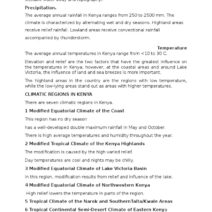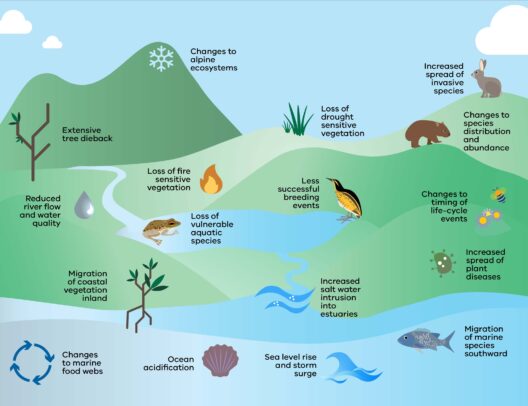Global warming has emerged as one of the most critical challenges humanity faces today. With rising temperatures, melting ice caps, and increasingly erratic weather patterns, the urgency to combat climate change is palpable. To address this pressing issue, it is essential to focus on understanding and mitigating the root causes of climate change. By examining the various factors contributing to global warming, we can implement effective strategies to ensure a sustainable future for our planet.
Understanding Global Warming and Its Mechanisms
To tackle global warming effectively, it is paramount to understand its fundamental mechanisms. At its core, global warming results from an increase in greenhouse gases (GHGs) in the atmosphere, particularly carbon dioxide (CO2), methane (CH4), and nitrous oxide (N2O). These gases trap heat from the sun, leading to a gradual rise in the Earth’s average temperature, a phenomenon commonly referred to as the greenhouse effect. Sources of these gases are manifold, with major contributions stemming from industrial activities, deforestation, and agricultural practices.
The industrial revolution marked a pivotal shift in human interaction with the environment. The advent of fossil fuels revolutionized energy usage but also led to an unprecedented increase in CO2 emissions. Today, the burning of coal, oil, and natural gas for energy production accounts for over 70% of total GHG emissions. Understanding this connection highlights the necessity for transitioning to renewable energy sources, such as solar, wind, and hydropower, to mitigate the impact of industrialization on climate.
Deforestation, another major factor, reduces the Earth’s capacity to absorb CO2. Trees act as carbon sinks, sequestering carbon dioxide from the atmosphere. However, rampant deforestation, spurred by agriculture and urbanization, diminishes this critical ecological function. Thus, promoting reforestation efforts and sustainable land management practices is paramount in our pursuit of a healthier climate.
Innovative Agricultural Practices for a Sustainable Future
A significant portion of GHG emissions can be attributed to agricultural practices. Conventional farming methods often rely on synthetic fertilizers and monocultures, which can emit large amounts of nitrous oxide and contribute to soil degradation. To address these issues, innovative agricultural practices must be adopted. Techniques such as agroecology, permaculture, and regenerative agriculture can enhance biodiversity, restore soil health, and reduce chemical inputs.
Agroecology emphasizes the integration of ecological principles into agricultural systems. By fostering diverse ecosystems, farmers can enhance productivity and resilience while simultaneously reducing dependency on chemical fertilizers. Crop rotation, cover cropping, and intercropping are examples of practices that can enhance soil fertility and mitigate emissions.
The adoption of livestock management practices that prioritize sustainability is equally essential. This can include rotational grazing, which improves soil carbon sequestration and diminishes methane emissions from ruminants. Implementing these innovative agricultural practices not only addresses global warming but also promotes food security and the well-being of farming communities.
The Role of Policy and International Cooperation
While individual efforts to combat climate change are crucial, systemic change is necessary to achieve meaningful progress. Governments and international bodies play a pivotal role in formulating policies that address climate change’s root causes. Emission reduction targets, carbon pricing policies, and investments in green technology are fundamental components of any comprehensive climate strategy.
International cooperation is essential, as climate change is a global issue that transcends national boundaries. Agreements like the Paris Accord aim to unite countries in their efforts to limit global warming to well below 2 degrees Celsius. Fostering collaboration among nations can facilitate the sharing of technology, resources, and knowledge needed to combat climate change effectively.
Furthermore, local governments must also champion sustainability initiatives. Developing comprehensive urban planning strategies that promote green spaces, public transportation, and energy-efficient buildings can significantly reduce urban emissions. By prioritizing sustainability at every level of governance, we can cultivate a culture of environmental responsibility.
Empowering Citizens through Education and Awareness
An informed and engaged citizenry is pivotal in combatting global warming. Education plays a crucial role in equipping individuals with the knowledge needed to make environmentally conscious decisions. Schools, community organizations, and media platforms must prioritize climate education to inspire actions that lead to a sustainable future.
Awareness campaigns can effectively mobilize communities to adopt greener practices, from reducing energy consumption to engaging in local conservation efforts. Encouraging individual responsibility, such as minimizing waste and prioritizing sustainable products, fosters environmental stewardship. Every small effort contributes to the collective impact required to address global warming comprehensively.
Conclusion: A Collective Path Forward
Addressing the root causes of climate change necessitates a multifaceted approach that encompasses innovative agricultural practices, systemic policy changes, and public engagement. It is imperative that the global community recognizes the interconnectedness of these elements and acts with urgency and determination. The solution to global warming lies not in isolated actions but in a collective movement towards sustainability. Through informed choices, collaborative efforts, and unwavering commitment, we can combat climate change and ensure a healthier, more resilient planet for future generations.








